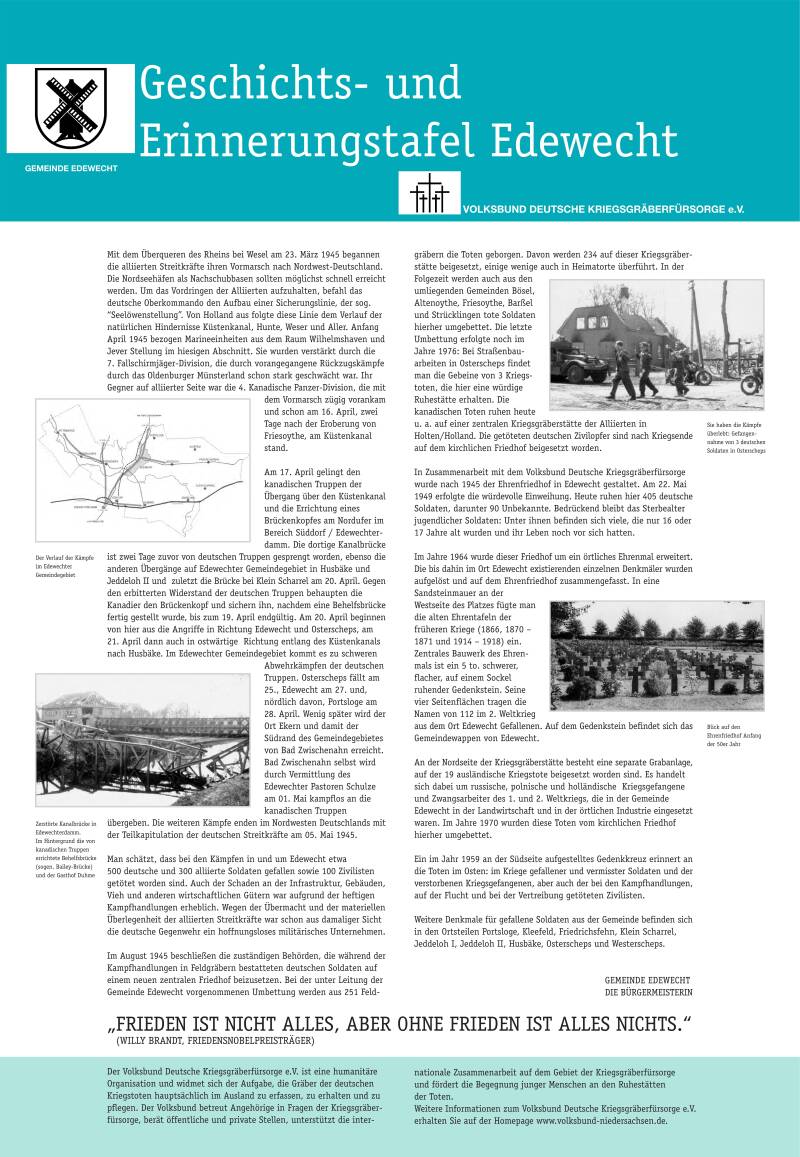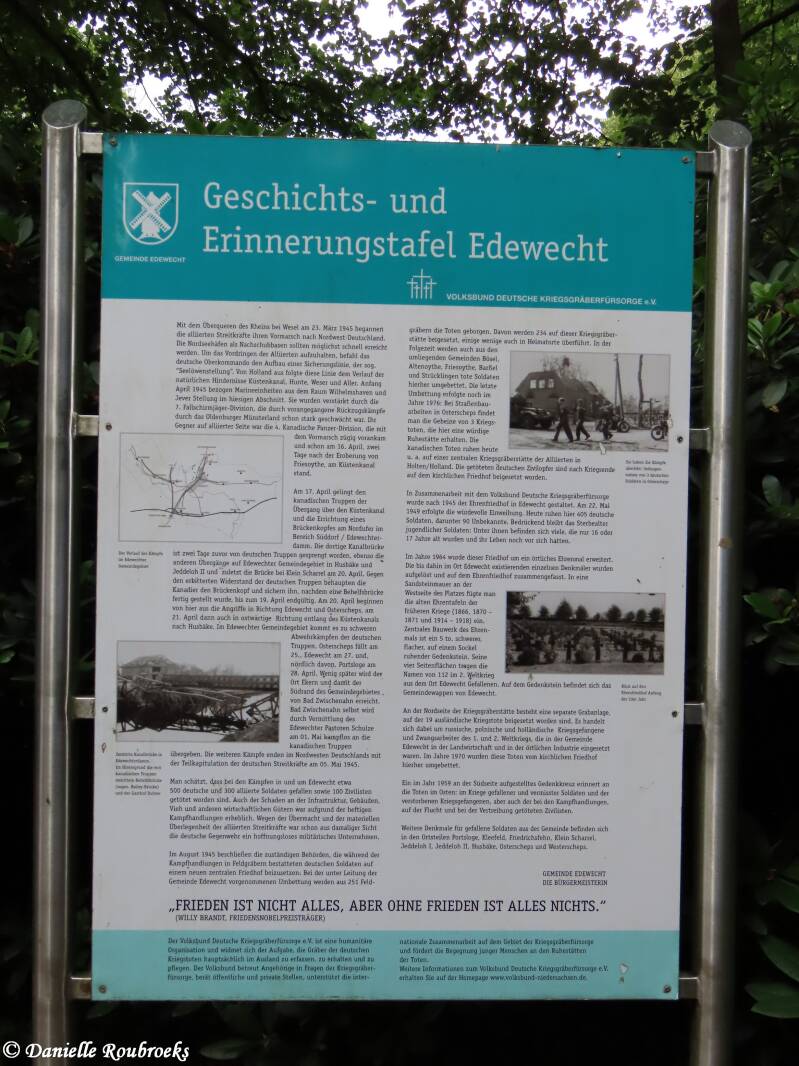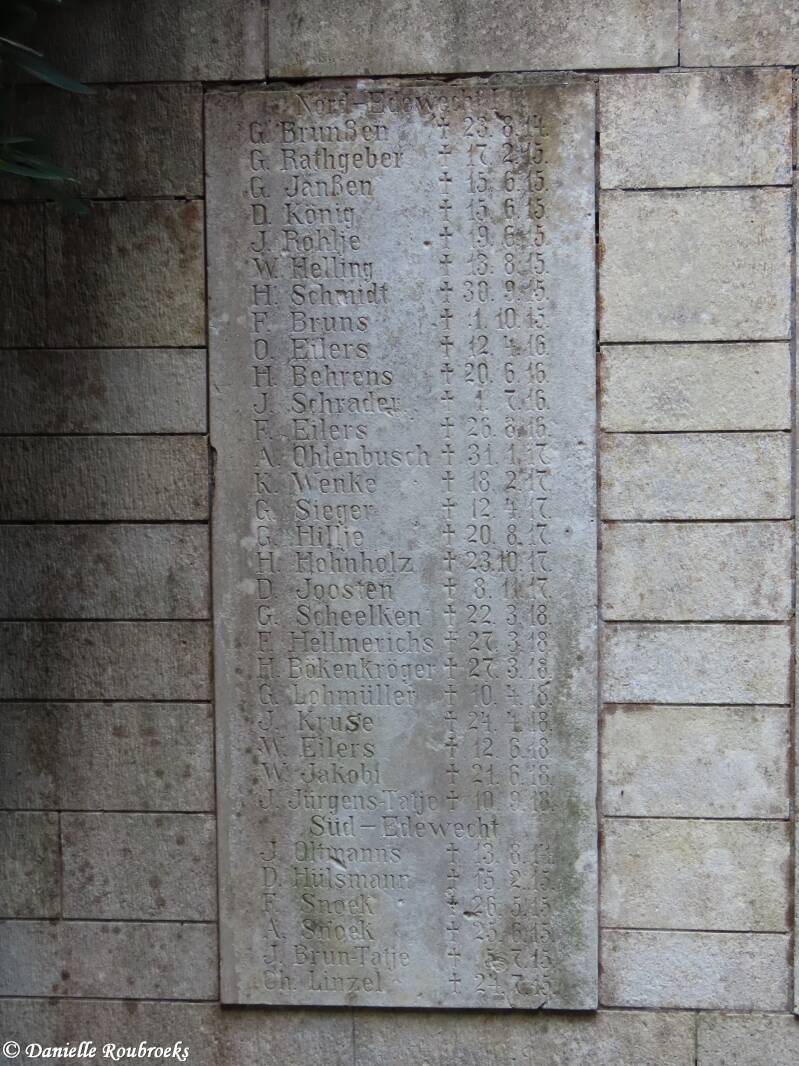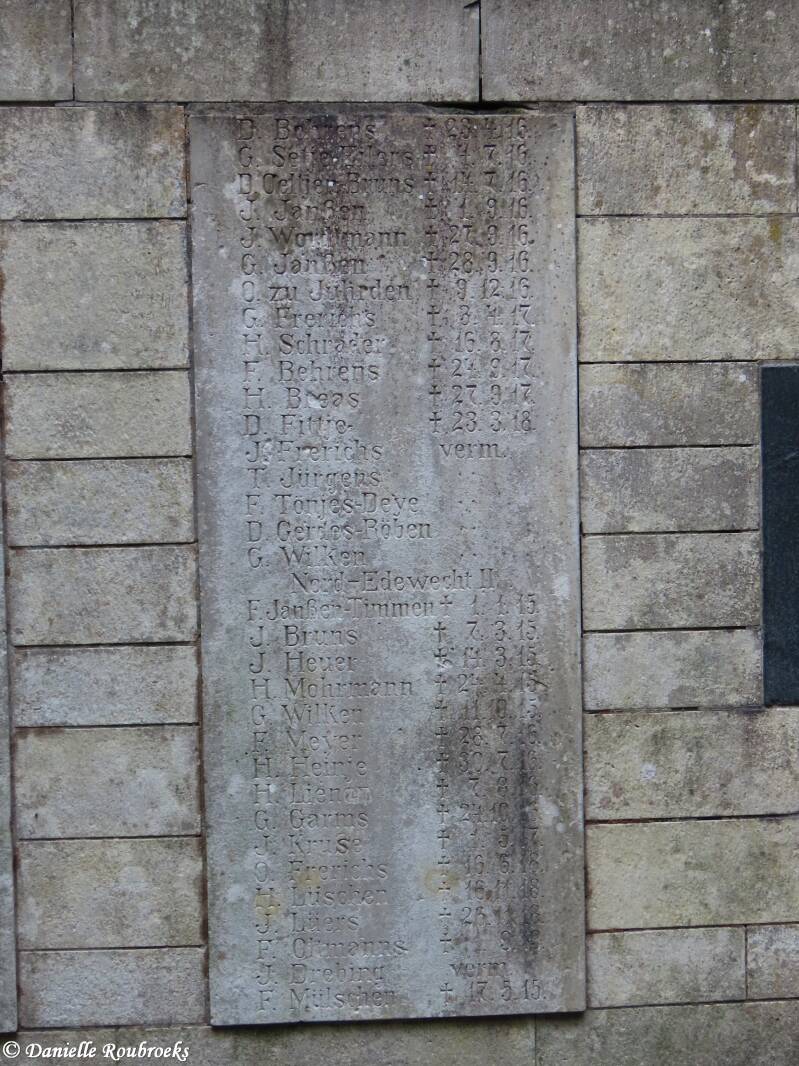Edewecht Kriegsgräberstätte - German War Cemetery
Edewecht - First German War Cemetery of the Volksbund
424 war dead from the Second World War are buried in this war cemetery. They are mostly young German soldiers who died in the fighting on the Küstenkanal in April 1945, just a few days before the end of the fighting in northwest Germany. The birth dates on the gravestones often show 1926, 1927 or even 1928. Some of the young men were not even 17 years old when they died. Many of them had been sent to Edewecht with little training and inadequate equipment, often coming from Wilhelmshaven. They were unable to prevent Canadian troops from crossing to the north side of the coastal canal and subsequently paid for the fighting with their lives. The town of Edewecht was largely destroyed, and civilians were also killed. 80 of the 400 stone crosses bear the inscription "Unknown Soldier".
The dead, who were often buried at the place of their death after the fighting, gradually found their final resting place in the newly created cemetery from August 1945 onwards. In addition, bodies were reburied from other towns. The official inauguration of the war cemetery, which was subsequently restored with dignity, took place on May 22nd, 1949 in the presence of the then President of the Volksbund, Wilhelm Ahlhorn. This cemetery is thus the first war cemetery that the Volksbund built after the end of the Second World War. Forced laborers were also buried in this war cemetery after their bodies were reburied from the church cemetery in 1970. They came from the Soviet Union, Poland and the Netherlands and had to work in Edewecht or in surrounding towns. Many of them also died in April 1945, others after the end of the war.
Grave 316. The naval mate Fritz Hentschel arrives in Wilhelmshaven with his ship on April 2nd, 1945. He and his comrades are immediately dressed in "field gray" and sent to the front. On April 17th, Fritz is fatally wounded while providing assistance.












































